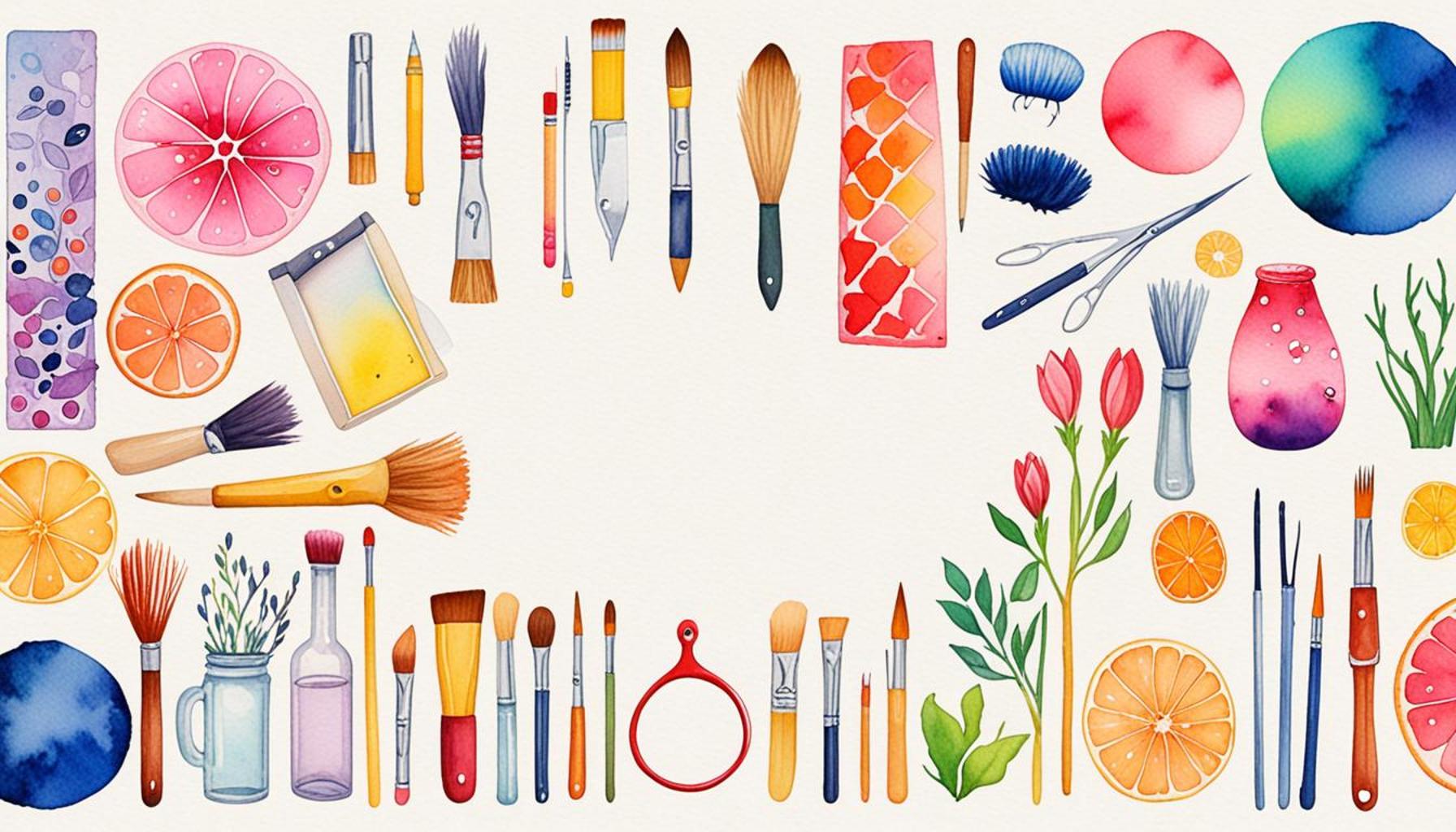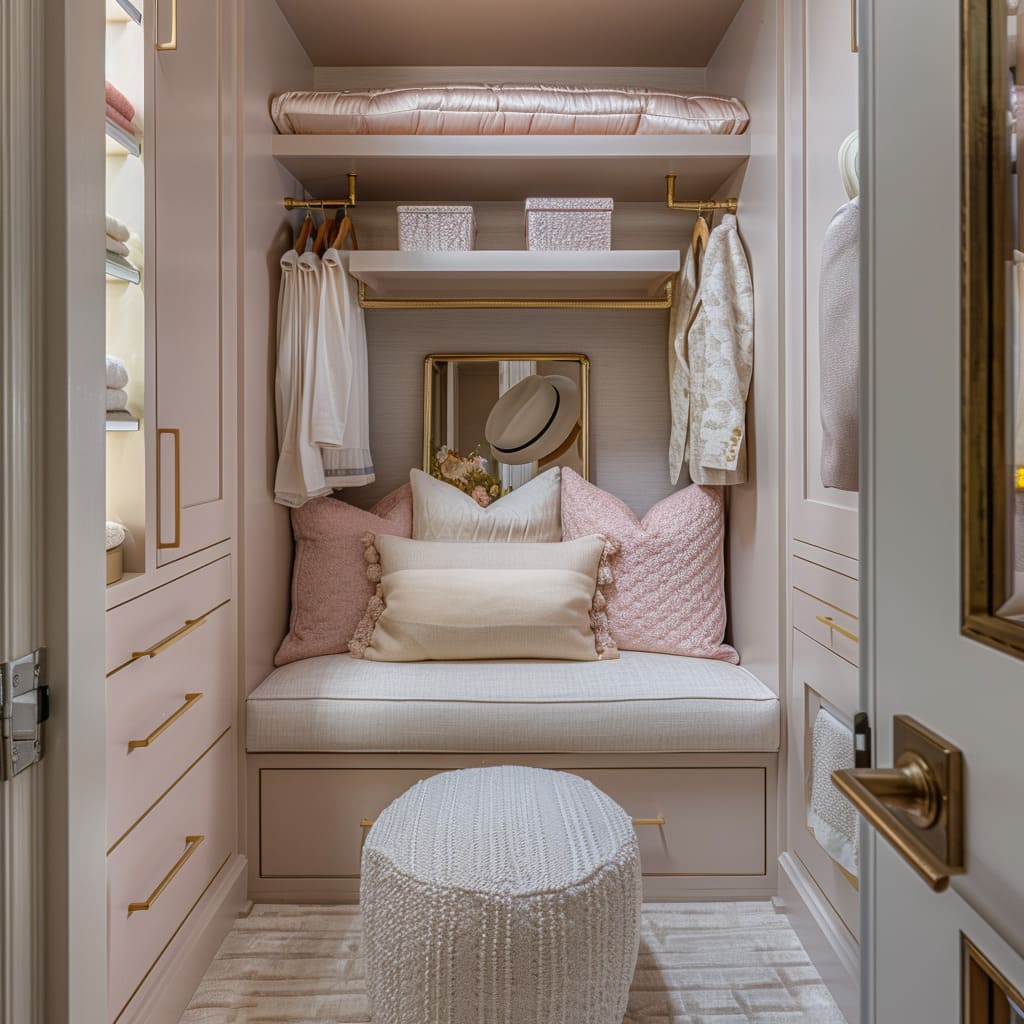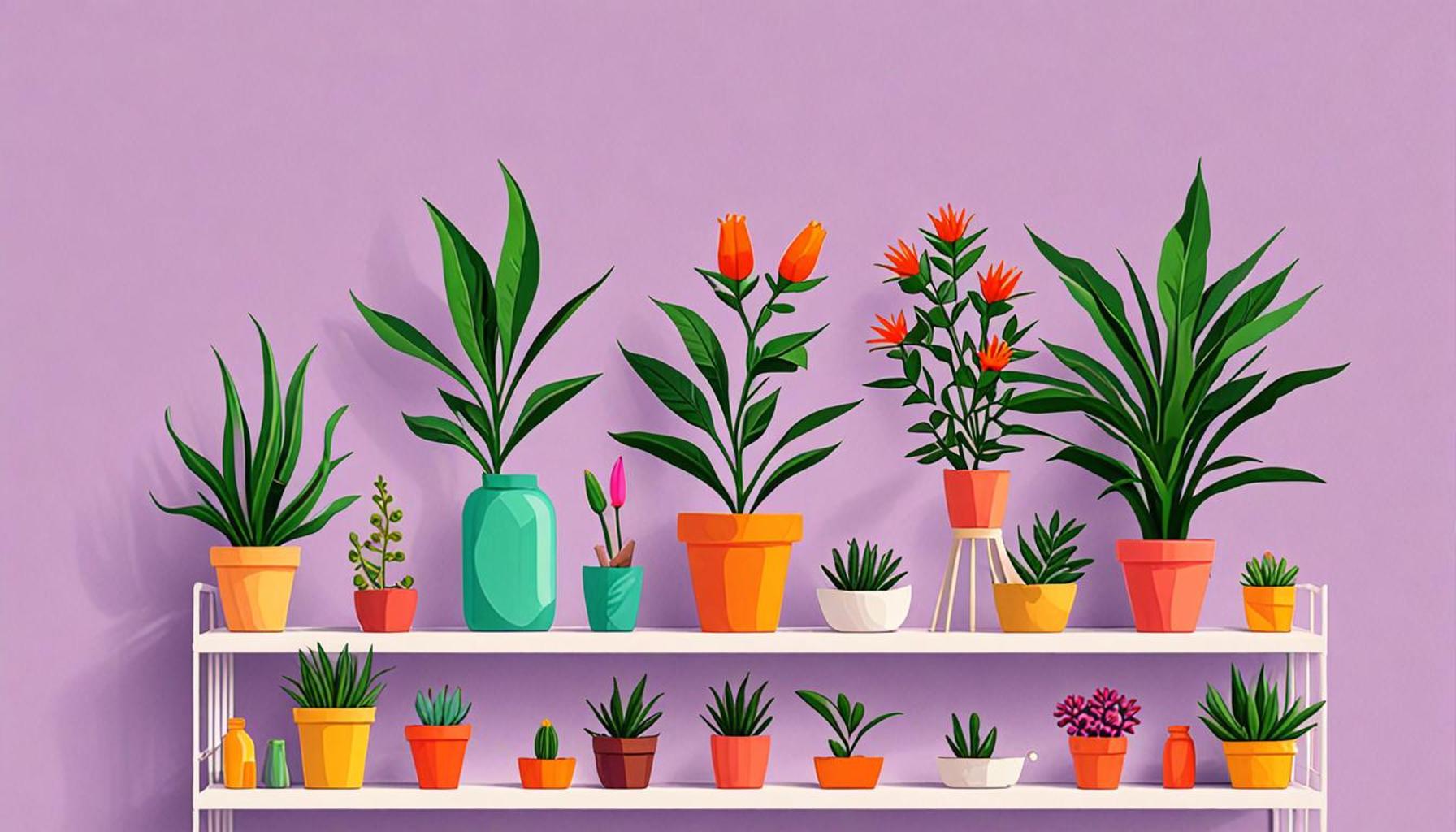The simple aesthetics in DIY projects: how to create functional and elegant pieces

The Beauty of Practical Creativity
In today’s fast-paced world, where consumerism often overshadows individuality, DIY projects serve as a breath of fresh air. They offer a unique platform for individuals to interweave their style with functionality, creating spaces and items that are both beautiful and useful. By embracing simple aesthetics, DIY enthusiasts can explore a creative outlet that doesn’t require a professional background or extensive resources, proving that stunning results can emerge from simplicity.
The appeal of focusing on simplicity is multifaceted and resonates with a broad audience, from seasoned crafters to beginners eager to explore their creative sides. Here are several key advantages of adopting a minimalist approach in DIY:
- Timeless Appeal: Elegant designs often defy the confines of current trends. For instance, Scandinavian design has gained popularity due to its clean lines and functional nature, suggesting that looking back at timeless aesthetics can lead to pieces that feel fresh yet familiar. A handmade coffee table in this style can merge seamlessly into any living room, remaining stylish through changing fashions.
- Ease of Creation: Simplicity translates into accessibility. A DIY bookcase made from basic wooden crates, for instance, can be constructed in an afternoon, providing both a project for the novice and a practical storage solution for any home. This ease encourages people to engage in crafting without the intimidation of complex techniques or expensive materials.
- Eco-Friendly Options: By minimizing material use, DIY projects not only reduce waste but also promote a sustainable lifestyle. Consider the trend of using reclaimed wood to create side tables or decorative items. This not only reclaims materials that might otherwise end up in landfills, but adds character to the projects, turning old wood into new treasures.
Exploring popular DIY trends further illustrates the intersection of functionality and elegance. For example:
- Minimalist furniture pieces, such as sleek benches or angular chairs, provide seating that makes a statement while maximizing small living spaces.
- Handcrafted wall art—think of geometric shapes or simple canvas paintings—can imbue a room with personality without overwhelming the senses.
- Functional decor, such as sleek shelving made from reclaimed materials, serves both as a practical storage solution and a striking visual element in home decor.
As you embark on your DIY journey, remember that true elegance doesn’t necessarily equate to extravagance. In many cases, it is the subtle details—like the graceful curvature of a handmade vase or the seamless addition of a simple pendant light—that leave a lasting impression on any environment. By channeling creativity into functional elegance, you not only enrich your surroundings but also cultivate a deeper appreciation for the art of making. Immerse yourself in this world where practicality meets beauty, and discover the joy of creating something truly your own.
DISCOVER MORE: Click here for tips on crafting your ideal daily routine

Embracing Minimalism in DIY Design
As you delve deeper into the world of DIY projects, it’s essential to understand the value of minimalist design principles. Embracing simplicity in your creations not only enhances their functionality but also lends an air of elegance that resonates well in modern home aesthetics. To embark on this journey, it is crucial to consider the fundamental elements that define simple yet striking DIY projects.
At the heart of minimalist design lies the principle of “less is more.” This philosophy emphasizes the elimination of excess, allowing essential features to shine through. When you create functional yet elegant pieces, focus on the following core aspects:
- Form Follows Function: A well-designed piece should serve its intended purpose without unnecessary embellishments. A bench made from reclaimed wood serves as both seating and an accent piece, making it a functional addition while introducing warmth to your living space.
- Quality Materials: The choice of materials can dramatically impact the final result of your DIY project. Opt for natural elements such as wood, stone, or metal, which not only elevate the overall aesthetic but also ensure longevity. For instance, a simple wooden planter can add an organic touch to your home while showcasing plants beautifully.
- Color Palette: A subdued color scheme often complements minimalist designs, evoking a sense of calm and clarity. Neutral tones such as whites, grays, and soft earth hues provide a perfect backdrop for your creations, allowing them to blend seamlessly into any environment. An elegant wall shelf in a matte finish can provide both style and storage without overwhelming the space.
- Attention to Detail: Simple aesthetics are often enhanced by subtle details. Consider adding rounded edges to your furniture or employing unique yet understated joinery techniques. Such thoughtful elements contribute to a polished look without compromising the minimalist ethos.
Exploring DIY projects through the lens of minimalism opens up a realm of creative possibilities. For example, consider making functional decor such as minimalist spice racks or simple coat hooks. These items not only serve practical purposes but can also become statement pieces in your home. Similarly, basic lighting fixtures crafted from wire or wood can illuminate your space while offering a touch of artistic flair.
Ultimately, the journey of DIY home decor is about expressing your unique style while prioritizing practicality. Simple aesthetics allow you to focus on what truly matters in design—functionality, sustainability, and beauty. As you engage with your creativity, remember that every piece you create contributes to a deeper narrative, transforming your living space into a personalized sanctuary.
To harness the essence of simple aesthetics in DIY projects, one must begin with the core principles that govern “less is more.” This approach encourages creators to focus on functionality while maintaining an elegant visual appeal. Incorporating natural materials, such as wood, metal, and stone, not only adds a touch of authenticity to your projects but also enhances their durability. Utilizing a limited color palette can streamline the design process and create a cohesive look that is inherently sophisticated. Shades of white, beige, and gray can act as beautiful backdrops, allowing key elements to stand out. Consider adding texture through fabrics and surfaces, which can elevate the overall aesthetic without cluttering the space.Moreover, embracing open space and minimalistic designs can make smaller areas appear larger and more inviting. When crafting furniture or decorative items, think about how each piece can serve multiple purposes—this not only maximizes utility but also minimizes visual noise.Attention to detail is paramount; even the smallest touch, such as rounded edges or smooth finishes, can refine the overall look of your creation. Aim for seamless integration of form and function, aligning your projects with a philosophy that cherishes simplicity while celebrating elegance.As you embark on your DIY journey, remember to draw inspiration from various sources such as Scandinavian designs or Zen philosophies, which prioritize functionality alongside beauty. By embedding these principles into your work, you’ll discover that creating functional and elegant pieces is both rewarding and achievable, bringing a sense of satisfaction to every successful project you undertake.
DISCOVER MORE: Click here to unlock the secrets of a minimalist lifestyle
Innovative Techniques for Functional Elegance
Incorporating simple aesthetics into your DIY projects is not merely about the visual appeal; it also entails exploring innovative techniques that enhance both form and function. Using various crafting methods, you can create pieces that are not only elegant but also serve specific purposes within your home. Through careful weaving of both creativity and practicality, you can transform commonplace materials into showstopping décor.
Upcycling is a rising trend that allows DIY enthusiasts to breathe new life into discarded items. This approach aligns perfectly with minimalist principles, as it inherently promotes sustainability while reducing waste. For example, old furniture pieces can be sanded down and refinished to develop unique textures and colors, offering a vintage yet sophisticated touch. A chair, once deemed outdated, can become a chic accent in your living room with some strategic sanding and a fresh coat of paint. Upcycled items serve a functional need while also telling a story, making them standout features in your décor.
Another effective method for achieving functional elegance in your DIY projects is the use of modular designs. Modular furniture can cater to varying needs and spaces, offering flexibility without compromising style. Consider creating a set of stacking storage cubes from plywood—each cube can serve as a standalone unit or be paired with others to create a cohesive shelving system. This type of construction melds simplicity with utility, allowing for easy customization to fit your household’s needs.
Moreover, organic shapes and minimalistic lines can dramatically enhance the aesthetic quality of your projects. Instead of traditional angular furniture, experiment with smoother, rounded edges and flowing designs. For instance, a coffee table with a live-edge top can add an organic feel, naturally inviting conversation while serving as an eye-catching centerpiece. Such designs not only look good but also promote safety and flow within a space, aligning beautifully with the principle of “form follows function.”
Lighting is another pivotal area where DIY enthusiasts can shine while adhering to minimalist aesthetics. Simple yet elegant lighting fixtures made from industrial materials such as concrete or copper pipes can transform any room. Crafting pendant lights or simple wall sconces with these materials showcases the beauty of raw, unrefined elements, bringing an understated sophistication that can define a space. Moreover, incorporating LED technology can ensure energy efficiency, seamlessly blending sustainability with style.
Creating outdoor pieces further allows for experimentation with functional designs. Consider building a simple, elegant garden bench using pressure-treated lumber for durability. This piece can act as both seating and a decorative element, enhancing your patio or yard while providing a place for relaxation. Additionally, DIY planters designed with clean lines can accentuate your garden, making it seem curated and well-kept, complementing the beauty of your plants while maintaining a minimalist vibe.
Lastly, remember that the craftsmanship you pour into your projects can elevate the perception of simplicity in your designs. Mastery of essential techniques like joinery can lead to sophisticated finishes that appear refined yet effortless. A seamless dovetail joint can be a hallmark of quality while contributing to the minimalist ethos, ensuring each piece is structurally sound and visually appealing.
By harnessing these innovative techniques, you not only create visually compelling pieces but also enrich your living environment with functional elegance. The power of DIY projects lies within your imagination, encouraging you to explore, experiment, and express your individual style through simple aesthetics.
DISCOVER MORE: Click here to enhance your home office style
Conclusion: Embracing Simple Aesthetics in DIY Projects
The journey of creating DIY projects rooted in simple aesthetics is both rewarding and liberating. By focusing on clean lines, sustainable practices, and innovative techniques, you can craft pieces that enhance your living space while being inherently functional. As discussed, approaches such as upcycling and modular designs not only add character to your home but also reflect your commitment to sustainability and resourcefulness. Discovering the beauty in raw materials—like incorporating industrial elements into your lighting design or choosing organic shapes for furniture—deepens the connection between the creator and their creation.
Moreover, the key to achieving elegance lies in the details. By mastering essential skills such as joinery and honing your craftsmanship, you can ensure that every piece you create speaks volumes about quality and thoughtfulness. It invites conversation and admiration, bringing the essence of functional elegance into the spotlight.
In practical terms, embracing the minimalist aesthetic in your DIY projects encourages a clutter-free environment, offering not just an attractive living space but a mindful approach to design. As you continue to explore, innovate, and express your personal style, remember that each piece you craft carries a story and a purpose. This commitment to simplicity and functionality resonates with the ever-evolving design trends that prioritize thoughtful living. So gather your materials, channel your creativity, and embark on the adventure of creating your own breathtaking yet essential DIY pieces that celebrate the beauty of minimalism.


